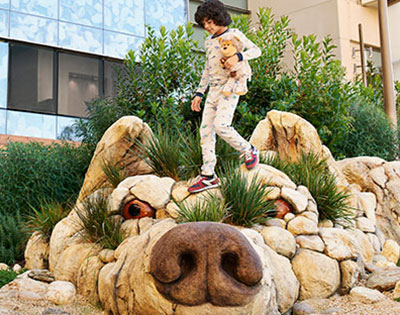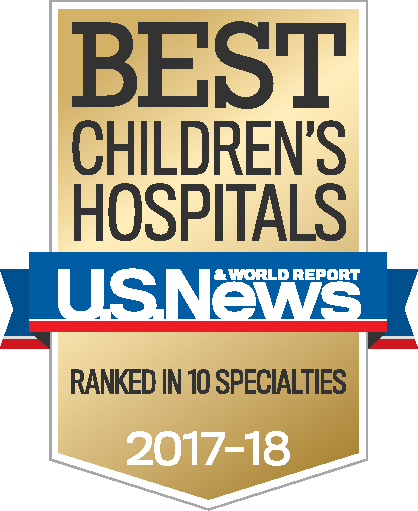Visiting Information and Guidelines
At Lucile Packard Children’s Hospital Stanford, we know that family and friends are an important part of each patient’s healing experience. As part of our commitment to family-centered care, we welcome visitors and encourage families to spend as much time together as possible in our hospital.
In general, visiting hours for the hospital are 8 a.m. to 9 p.m. and quiet hours are from 9 p.m. to 8 a.m. In most units, two or three people are allowed to visit a patient at one time. Guidelines for visitors and visiting hours may vary by unit or based on a patient’s medical needs.
Parking
Visit finding your way for information about parking and fees for visitors.
Checking In
Safety and the well-being of our patients is our top priority. Hospital visitors must check in before entering the hospital to receive an identification badge. It is part of our commitment to ensuring a safe environment at both the Main and West buildings of Lucile Packard Children’s Hospital Stanford.
Health, Safety and Hand Hygiene
To maintain the healthiest environment possible and to avoid infection of patients, visitors are screened for contagious diseases. Please do not bring children to visit if they display signs of contagious diseases or have been recently exposed to measles or chickenpox.
If you notice anything unusual in or around the hospital such as: missing items, unbadged personnel, suspicious persons or items, you should report your concerns to the Security Department by contacting (650) 723-7222.
The best way to prevent infection is to wash your hands often and well. All of us carry germs. To prevent these germs from harming you or your child, wash your hands with soap and use the alcohol hand sanitizer. Always clean your hands upon entering and before leaving your hospital room, before or after eating or feeding your child, after using the bathroom or changing a diaper, and after sneezing, coughing or blowing your nose.
Labor and Delivery
Expectant women delivering their babies in the Johnson Center for Pregnancy and Newborn Services may have up to three visitors in their labor and delivery room at any time. Visitors must be 16 years or older with the exception of siblings who are welcome to visit with a supervising adult visitor.
Maternity
New mothers may enjoy having family and friends visit them in the Maternity Unit from 8 a.m. to 9 p.m. There is a special quiet time on the Maternity Unit from 2 p.m. to 4 p.m. Visitors are encouraged to avoid visiting during those hours so mothers and babies can rest.
Numbers of Visitors by Unit
The following is a list of units and the number of visitors allowed at one time during general visiting hours. Visitors not in the room can wait in lounges and waiting areas, not in the corridors. Guidelines for visitors and visiting hours may vary depending on a patient’s health and are at the discretion of clinical staff.
General Care Floors Pediatric Care Unit (PCU) 350(3 East), 360 (3 North), 374 (3 West), 380 (3 South) — 3 people
1 north — 3 people
PICU/CVICU — 2 people
Labor and Delivery — 3 people
Maternity — 2 people
NICU/IICN/PSCN — 2 people, one of whom must be the patient’s parent or designee
PACU/Same-day surgery — 2 parents or adult designees in Pre-Op and PACU
Stem cell transplant — 2 immediate family members
Overnight stay
In the Maternity Unit, one adult primary support person may stay overnight if the patient is in a private room. In a shared room, both families must provide verbal permission for a nurse to allow any support person to stay overnight.
In the Pediatric General Care Units, two parents or legal guardians may stay in the room at the discretion of the nurse if the patient is in a single room. Otherwise, when possible, bedside sleeping facilities are provided for one parent or adult designee.
For parents who aren’t able to sleep at the patient’s bedside, a social worker can assist with coordinating alternate sleeping arrangements. Parents who are assigned to sleep in a parent lounge should vacate with their belongings by 8 a.m. each morning.
Fire codes prohibit sleeping in alcoves, corridors or open public areas.
Service Animals
Services animals are permitted in all areas of Stanford Children's Health and are open to the public, including most patient areas, provided the service animal does not pose a direct threat or fundamentally alter our operations or procedures. Dogs that solely provide companionship, comfort and emotional support are not services animals under the Americans with Disabilities Act.





